
Hope Park Mill / Piney Branch Grist Mill / Robey's Mill
Fairfax Co. | Virginia | USA
Watersource: Piney Branch of Pope's Head Creek.
Hope Park Mill / Piney Branch Grist Mill / Robey's Mill
The mill is located at 12124 Pope's Head Road. From the intersection of Va 123 and Va 29 in Fairfax, go south about 3 miles to Popes Head Road on the right, and go about 2.5 miles to the mill on the right.
View Larger Map

The plantation of Hope Park was founded by Edward Payne in the 1750's and the same is accounted as building a small grist mill on Piney Branch of Pope's Head Creek. The first mill 'Hope Park Mill' was just that, used for the plantation only. Later the neighboring platations also utilized the mills services.
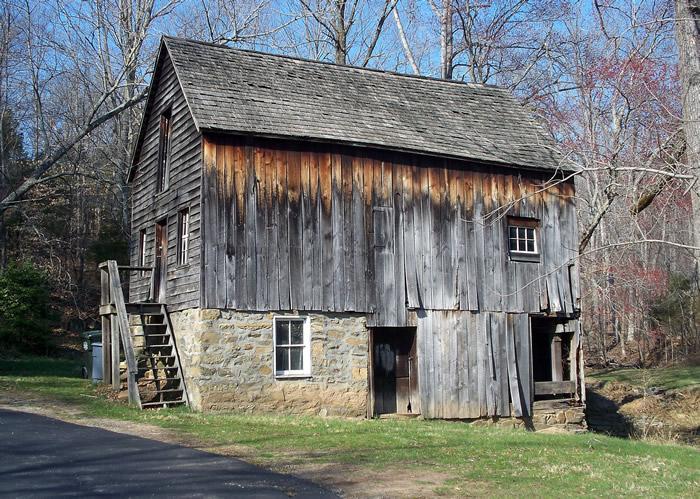
The next person to own the mill/plantation was Dr. David Stuart, an Alexandrian physician, in 1785. Stuart married George Washington's step-daughter-in-law, Eleanor Calvert Custis, in 1783.
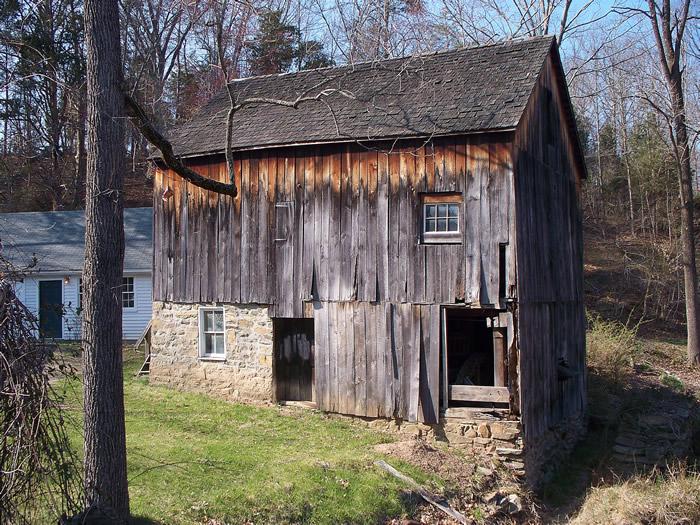
It is believed the present mill was built under the Stuart ownership, around 1800; when, he also built the miller's house. The first mention of the mill was in 1815 when it was for sale, following Stuart's death.
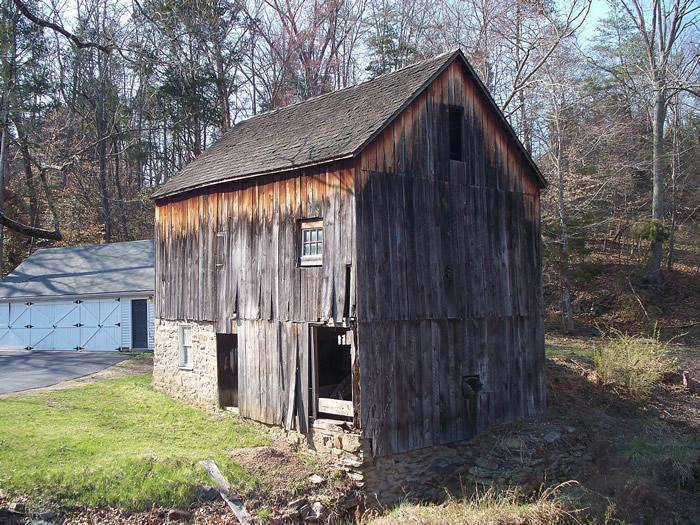
The mill was next purchased by John Barnes, Sr. in 1837. He first purchased the mill and a few months later purchased the entire plantation consisting of 2,000 acres. Barnes was a miller by trade and he trained his eldest son, Jack Barnes, to be a miller.
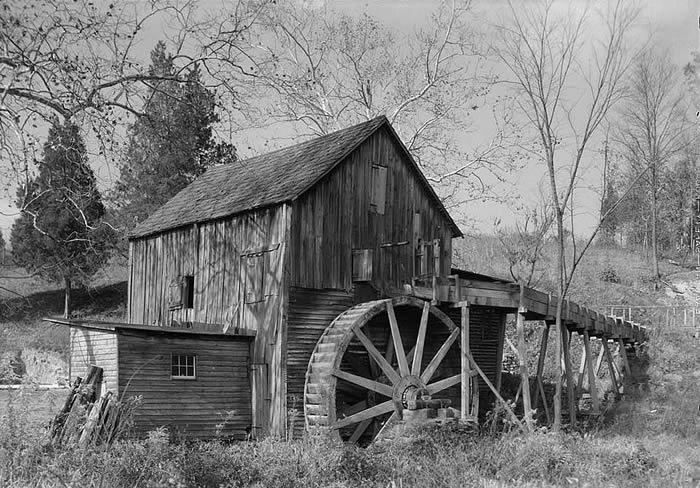
A photo from the Library of Congress, the Historic American Building Survey from the early 1933's. The wheel has now been removed, as has the small shed attached to the front as well as the two story, frame storage addition across the rear of the mill. The hopper shoe and damsel have also been removed, most all the other mechanisms are intact.
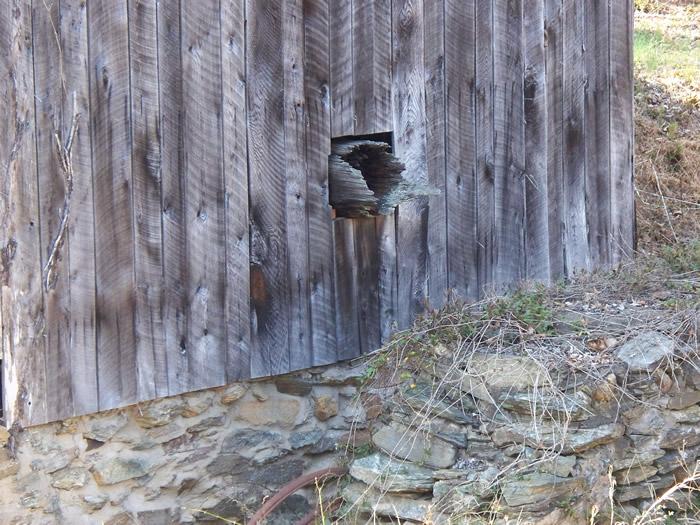
The stub of the old axle of the wooden waterwheel shown in the above photo. In 1853, Barnes Sr. gave the mill and miller's house to Jack and his wife. Jack (John H. Barnes, Jr. and his wife, Mary Fox Barnes, called their property ?Huntley?.
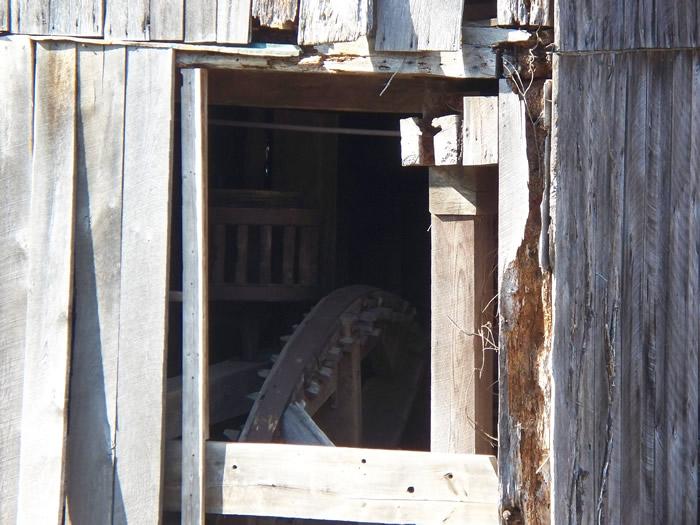
A photo from the road showing some gears inside the mill; also a considerable amout of dry rot in the structural post on the right front corner of the mill. The waterwheel waas rebuilt in 1935, then removed, perhaps when the mill was resided in 1963.
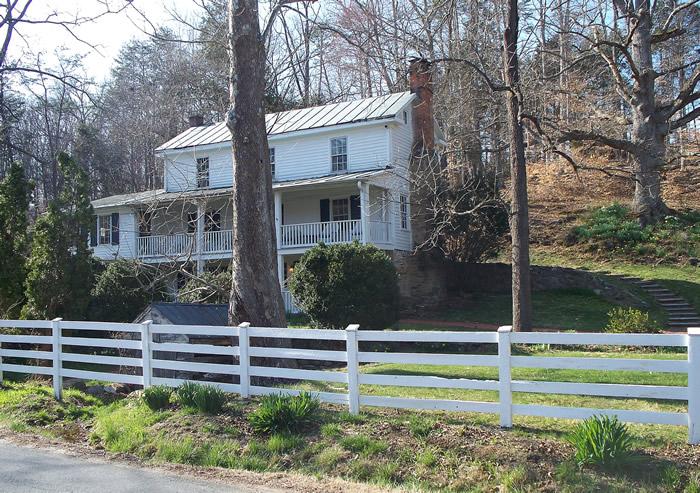
The miller's house to the left of the mill, the dwelling of David and Sally McGrath in 1975-77, when the mill was placed in the National Register of Historic Places.
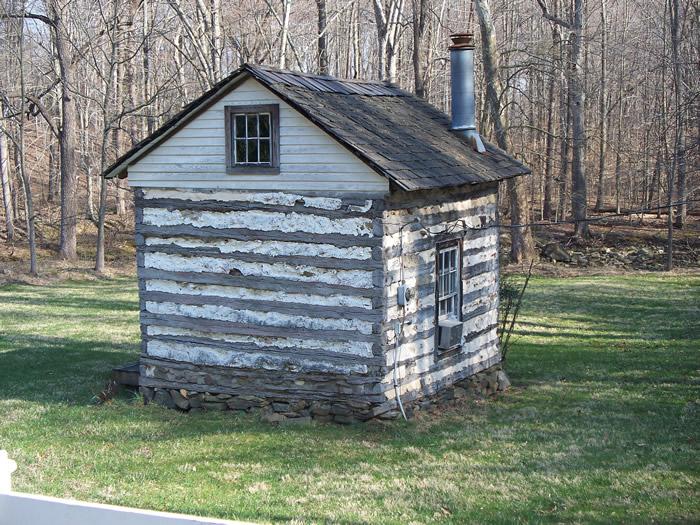
The servants cabin across the road from the miller's house. Most probably used as slave quarters prior to the Civil War.
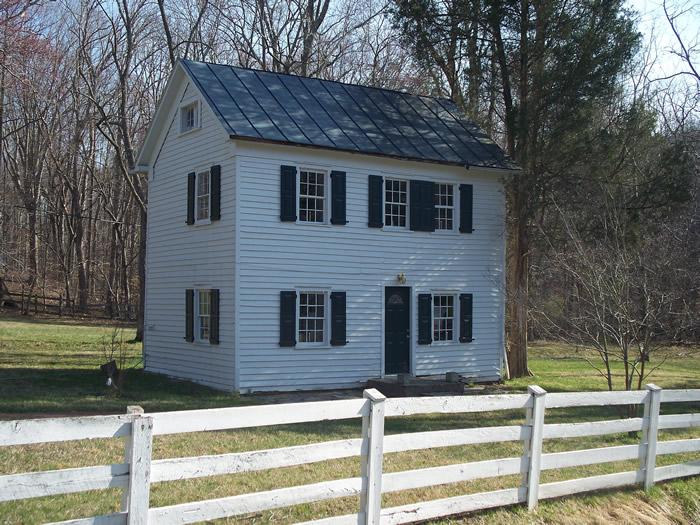
The tenant house, used by the miller that was hired to run the mill if different from the owner. The mill ceased operation during the Civil War, as Jack enlisted in the 17th V. Volunteer Infantry. The mill prospered again around 1900 under the ownership of Frank (Gabe) Robey. The mill's commercial production came to an end after Robey's death in 1906. Under Robey the mill saw its greatest period of production. He ground graham and buck wheat flour as well as the common flours of the day. He also ran a store in part of the mill. As a result of the success of the mill under Robey, the area today is known as Robey's Mill.
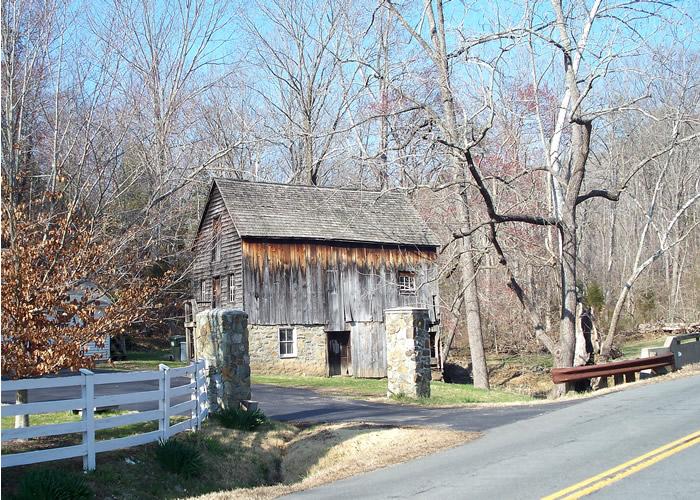
The mill as seen from Pope's Head Road looking through the entrance gates to the mill portion of Hope Park Plantation. GPS: 38' 48.91'N, 77' 21.94'W 325'/99 meters Fairfax Quadrangle